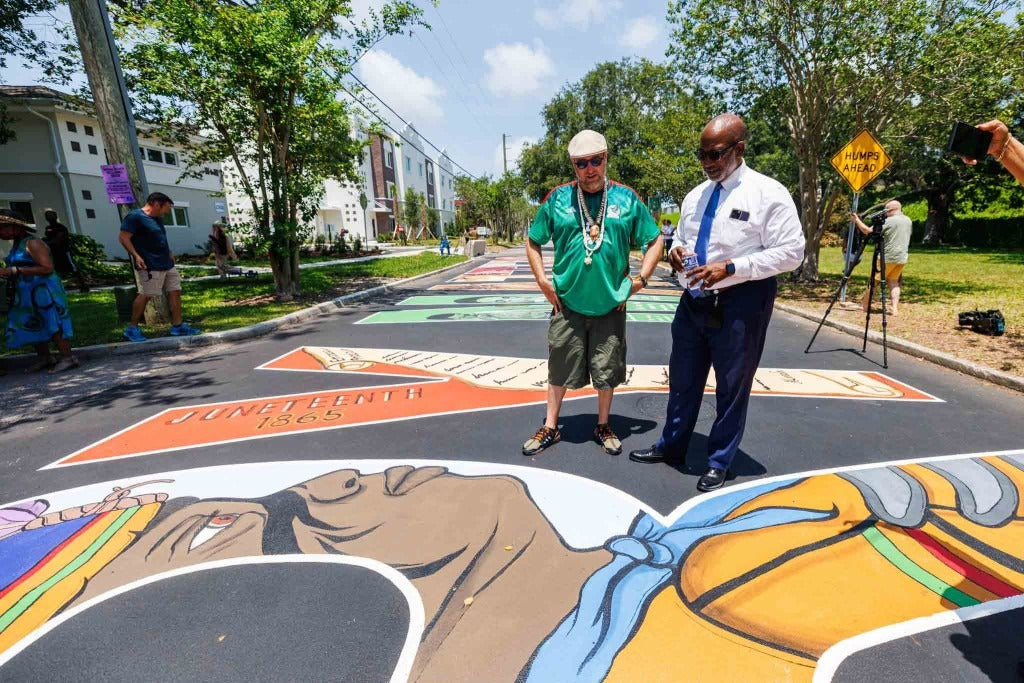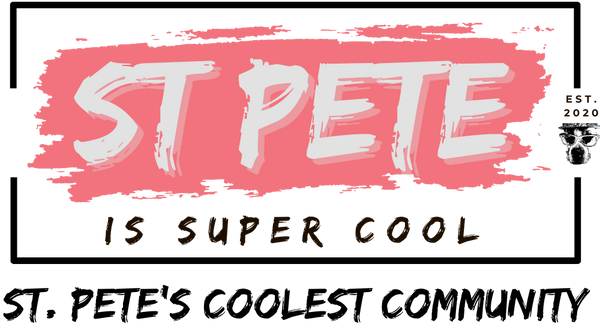
St. Pete’s Leadership Test: Culture or Compliance?
Share
The long-running tug-of-war between Tallahassee and St. Petersburg’s creative identity just got sharper. Mayor Ken Welch announced that the city will comply with a Florida Department of Transportation directive to remove several street murals FDOT says violate “traffic control device standards.” FDOT warned that noncompliance could lead to the withholding of state funds and that removal costs could be charged back to the city. The deadline is Sept. 4th.
What FDOT Ordered
FDOT District Secretary Justin Hall sent a letter to Evan Mory, the city’s Transportation and Parking Management Director, stating that the pavement art in question must be taken up by the deadline. If the city did not act, FDOT said it would remove the markings without further notice. The agency also made clear it would assess costs to the city and could pursue withholding state funds if St. Petersburg reversed course after agreeing to comply.
Which Murals Are Affected

The directive covers multiple locations across the city. They include the Black History Matters mural near the Woodson African American Museum of Florida at 9th Avenue and 22nd Lane S. There is the Pride rainbow at Central Avenue and 25th Street N., as well as the colored prism design at Central Avenue and 5th Street N. FDOT also cited the University of South Florida themed art at 6th Avenue and 2nd Street S. Another site listed is 11th Avenue and 46th Street S.
City officials previously asked FDOT to exempt these locations, noting the art predated the state’s most recent guidelines related to driver distraction and asphalt art. The state declined.
The Mayor’s Position
In his public statement, Mayor Ken Welch said that after consulting the City Attorney’s office and weighing the implications, St. Petersburg would comply with the order. He emphasized that city personnel would not perform the removal and that FDOT would exercise its authority under state law. Welch reaffirmed support for public art and said the city will work with the community to find lawful ways to celebrate local values in public space.
Leadership Under Pressure
The legal reality is clear. FDOT holds the cards on roadway standards and funding leverage. Still, the moment invites a harder question about leadership. Faced with a direct threat to withhold state funds, did Mayor Welch move too quickly to comply rather than test the order, seek a negotiated carve-out, or organize a broader legal and civic response alongside other Florida cities? Supporters will argue he protected the city’s finances and avoided litigation that could fail. Critics will say the response ceded ground on cultural expression and set a precedent that state pressure will be met with quick capitulation.
What Comes Next
These murals will come up, but the debate will not. If the city intends to preserve its identity in public space, it now has to define the “lawful ways” it referenced. That could mean shifting art off state-controlled pavement, re-siting projects to non-roadway surfaces, or pursuing designs that meet the letter of FDOT’s standards while still reflecting St. Pete’s values. The city can also publish a clear roadmap for future projects so artists, neighborhoods, and businesses know where creativity is still welcome and protected.
The bottom line is simple. St. Petersburg says it values creativity, inclusivity, and identity. Residents will be watching to see whether those values are defended the next time state power presses in.

